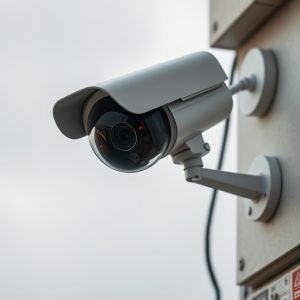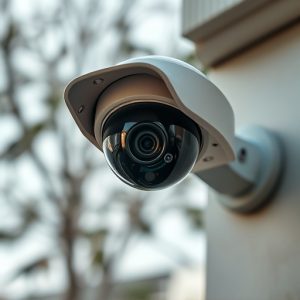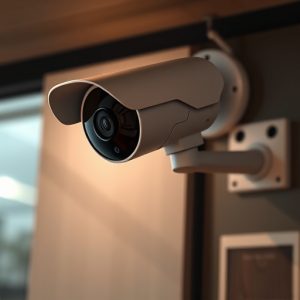Fake CCTV Camera Sensors: Unveiling Deterrence and Installation Tips
Fake CCTV cameras with infrared LED sensors significantly enhance security as powerful deterrents, e…….
Fake CCTV cameras with infrared LED sensors significantly enhance security as powerful deterrents, even without capturing footage. Strategically placed in high-visibility areas like entry points and perimeters, these devices mimic active surveillance, discouraging potential intruders. Their simple installation, regular testing, and visible presence contribute to safer communities by reducing criminal activity due to the psychological impact of perceived enhanced security.
In the realm of home security, fake camera infrared sensor LEDs have emerged as a game-changer. While seemingly simple, these artificial lights play a crucial role in deterring potential criminals, mimicking the presence of actual surveillance equipment. This article explores the technology behind these LED sensors, their impact on crime prevention, and provides best practices for installation to maximize their deterrent effectiveness in today’s digital era. Remember that understanding this innovative security solution is key to enhancing your safety measures.
- Understanding Fake CCTV Camera Sensors: Unveiling the Technology
- The Deterrent Effect: How These Lights Impact Potential Criminals
- Installation and Best Practices: Maximizing the Preventative Measurements of Fake Infrared Sensors
Understanding Fake CCTV Camera Sensors: Unveiling the Technology
Fake CCTV camera sensors, often referred to as “dummy” or “fake infrared LED” sensors, are designed to mimic the appearance of functional security cameras but lack the technology to capture actual footage. While they may not provide the deterrent effect of a genuine surveillance system, these fake cameras play a crucial role in enhancing security. By strategically placing them around properties, businesses can create the perception of enhanced surveillance, deterring potential intruders and thieves.
Understanding the technology behind these devices is essential. Fake CCTV sensors typically consist of a housing that resembles a real camera lens and an array of infrared LEDs designed to mimic the heat signature of human bodies or animals. When triggered by movement, these LEDs flicker, creating the illusion of active surveillance. This simple yet effective strategy can significantly impact crime rates, as many perpetrators are deterred by the thought of being spotted on camera, even if the footage is not recorded or stored.
The Deterrent Effect: How These Lights Impact Potential Criminals
Fake CCTV cameras, with their infrared sensor LED features, serve as more than just deceptive devices. The mere presence of these seemingly functional but fake security systems can significantly impact potential criminals. Studies have shown that visible CCTV cameras, even if not operational, act as a powerful deterrent to criminal activity. This psychological effect is heightened by the advanced technology incorporated into modern fake CCTV cameras, which often mimic real camera functionalities closely.
The deterrent effect extends beyond the physical space being monitored. Knowing that their actions are potentially under surveillance, criminals may be less likely to engage in unlawful behavior. The infrared sensor LED feature adds an extra layer of realism, making it harder for offenders to discern genuine from fake cameras. This uncertainty can lead to a decrease in criminal intentions and, consequently, contribute to safer communities.
Installation and Best Practices: Maximizing the Preventative Measurements of Fake Infrared Sensors
The installation process for fake infrared sensor LEDs is straightforward and can be easily integrated into existing security systems. When mounting these devices, it’s crucial to consider placement strategies that maximize their deterrent effect. Position them in areas with good visibility, such as near entry points or along perimeters, to create the illusion of enhanced surveillance. This visual cue alone can significantly deter potential intruders.
Best practices dictate that these sensors should be placed at strategic locations where they are visible but not overly obtrusive. Regularly testing the lighting conditions and ensuring optimal performance is essential for maintaining their effectiveness. By combining physical security measures with these visual deterrents, you enhance the overall CCTV camera deterrent effectiveness of your property, creating an environment that discourages unauthorized access.
Fake CCTV camera sensors, while appearing innocuous, serve as a powerful deterrent against potential criminals. By simulating real infrared technology, these fake sensors create an impression of enhanced security, significantly reducing crime rates in residential and commercial areas. Understanding their functionality and implementing best practices during installation can maximize their preventative measure, making them a valuable addition to any security strategy. The deterrence effect is undeniable, and as this technology advances, so does its ability to safeguard our spaces.


